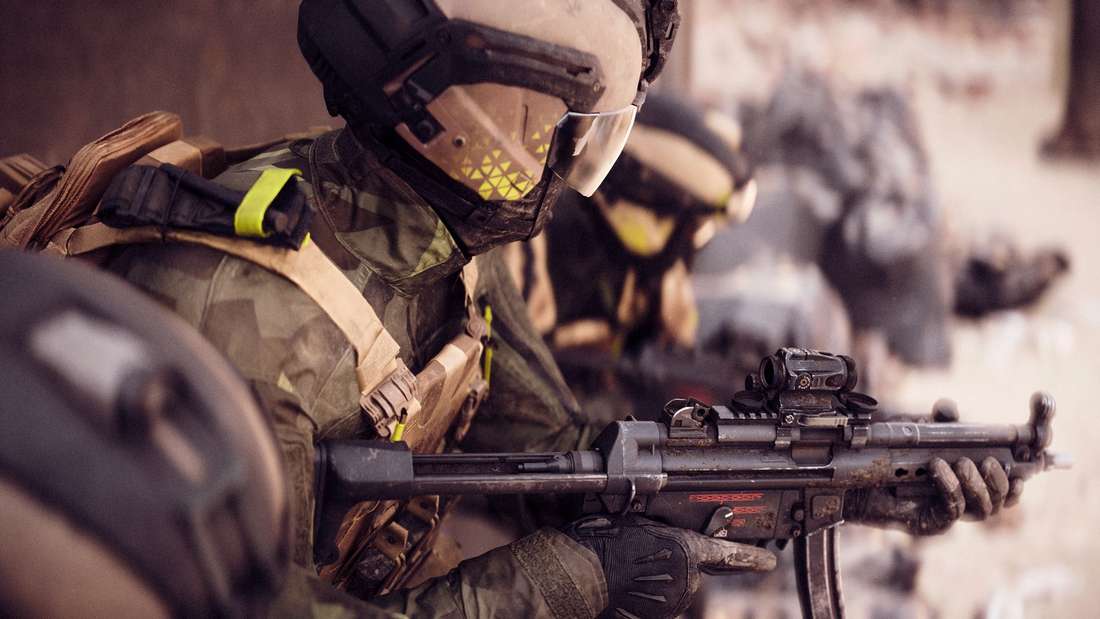The Ongoing Battle Over Battlefield 6’s Player Movement
Popular Now
 Fall Guys
Fall Guys
 Minecraft
Minecraft
 Free Fire
Free Fire
 League of Legends
League of Legends
 Among Us
Among Us
 Fortnite
Fortnite
 Sonic the Hedgehog™ Classic
Sonic the Hedgehog™ Classic
 The Legend of Zelda
The Legend of Zelda
 FIFA 23
FIFA 23
 R.E.P.O
R.E.P.O 
The highly anticipated launch of Battlefield 6 has been shadowed by a persistent and polarizing debate: the feel and flow of player movement. Following several beta phases and early access periods, the development team has found itself in a challenging “tug-of-war” with its dedicated player base. This struggle centers on recent adjustments—including specific nerfs to slide-jumping and other high-mobility mechanics—which have been met with fierce criticism and, conversely, praise. Developers are now confirming they are actively “looking at adjustments” to the current system, with the explicit goal of finding “a good in-between” that satisfies the demands for both skill expression and grounded, ‘traditional Battlefield’ gameplay.
 High-Stakes Movement Nerfs Divide the Player Base
High-Stakes Movement Nerfs Divide the Player Base
The core of the controversy stems from the developer’s move to rein in certain ‘arcade-like’ movement exploits, particularly those that allowed for near-limitless high-speed traversal, often seen as a staple in competitor titles. Specifically, initial changes focused on:
- Reduced Momentum: Significant cuts to the horizontal speed carried from a slide into a jump, aiming to curb ‘slide-jumping’ spam.
- Accuracy Penalties: Increased inaccuracy when firing while airborne or performing consecutive slides/jumps.
- ‘Clunky’ Feeling: Feedback suggests that these nerfs, while intended to make the game feel more tactical and less like a ‘run-and-gun’ experience, have inadvertently made the general movement feel “clunky” or unresponsive to a segment of the community.
This has resulted in two distinct camps. On one side, veterans of the franchise welcome the changes, viewing them as a necessary step to restore the series’ focus on teamwork, positioning, and slower, more deliberate tactical play. On the other, many players—especially those who favor fast-paced, high-octane First-Person Shooter (FPS) action—feel the game’s movement has been “overnerfed,” reducing the potential for high-skill, aggressive maneuvers. This internal conflict is a significant headwind for the game’s long-term player retention and competitive balance.
 Developer Commitment to Core Gameplay and Stability
Developer Commitment to Core Gameplay and Stability
In a recent community update, developers acknowledged the polarized feedback, assuring fans that the process is about refinement, not radical overhauls. A lead developer commented that the upcoming movement and sliding changes “are far from drastic” and are instead intended to deliver a more consistent and polished experience. The commitment is clear: to maintain the integrity of a “traditional Battlefield experience” while addressing exploits.
The urgency for these adjustments has been compounded by several high-profile glitch exploits that have surfaced since the latest patches. Players have quickly discovered and shared methods to bypass the intended movement limitations, including bizarre ‘drone-flying’ glitches and techniques that allow players to exploit map geometry for elevated, untouchable sniping positions. These exploits not only damage the competitive integrity of the game but also create a major negative player experience (PX), fueling the urgency for a stable, final system.
The Road Ahead: Finding the Golden Mean for Movement
The core challenge facing the Battlefield 6 team is a classic balancing act: how to create a high-skill ceiling that rewards advanced players without alienating the casual audience or compromising the core identity of the franchise. The search for a “good in-between” suggests the final version of the movement system will likely involve a slight rollback on the most restrictive nerfs, perhaps offering players:
- More Responsive Pacing: Slight increases in base movement speed or acceleration to reduce the ‘clunky’ feeling.
- Refined Slide Mechanics: Adjustments that retain the slide for emergency repositioning but prevent it from becoming a dominant offensive tool.
- Better Traversal: Further improvements to vaulting and mantling animations to make navigating the game’s complex, large-scale maps feel smoother and more reliable.
The developers are working “one step at a time,” prioritizing the elimination of game-breaking bugs and the stabilization of the core loop before committing to any major, headline-grabbing changes. This meticulous approach, though frustrating for players eager for instant fixes, underscores the high-stakes nature of balancing a modern Triple-A (AAA) title.
Final Thoughts: A Critical Juncture for Battlefield’s Future
The ongoing adjustments to Battlefield 6‘s movement system represent a critical juncture for the franchise. The game’s long-term success hinges not just on its massive battles and dynamic weather events, but on the fundamental, moment-to-moment feel of controlling a soldier. By actively engaging with feedback and seeking a system that honors both tactical depth and fluidity, the developers aim to deliver an experience that resonates with its diverse and demanding player base. All eyes are now on the next major patch for the definitive answers on whether this high-wire balancing act can stick the landing and solidify Battlefield 6 as a top-tier FPS contender in the competitive gaming market.
The conversation remains fluid, and we encourage players to continue providing structured, constructive feedback via official channels as the developers refine this core component of the game. Expect a major official debrief on movement in the coming weeks, which will detail the final proposed changes before the full launch cycle.










 High-Stakes Movement Nerfs Divide the Player Base
High-Stakes Movement Nerfs Divide the Player Base Developer Commitment to Core Gameplay and Stability
Developer Commitment to Core Gameplay and Stability